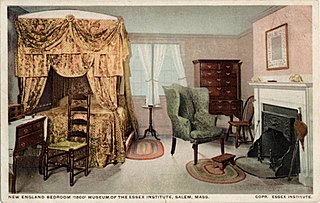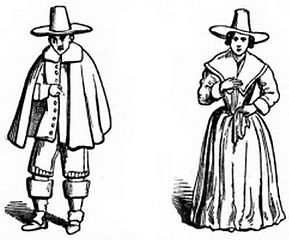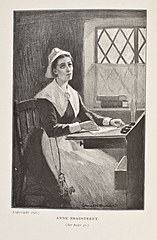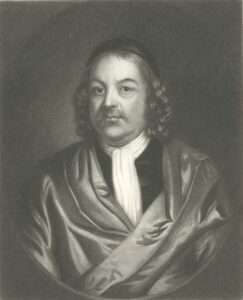
Valentine’s Day will soon be here, a day for romance & flowers; cupids & candy in heart-shaped boxes. Like many days our calendars commemorate, Valentine’s Day is largely an invention from the Victorian Age. Romantic love has a much longer history, but was not always the foundation of courtship and marriage.
In doing research for my Salem Stories series, I discovered New England Puritans did not marry for love. Marriage was a contract that had little to do with religion. It was a civil matter presided over by a magistrate. Most marriages were arranged when two young adults decided it was time to marry someone suitable to their social rank. Parents were involved, but the couple selected each other.

The courtship process was less than private in overcrowded houses. There were probably stilted conversations in the parlor surrounded by the woman’s family. In good weather, there could be walks. But as a couple drew closer, they bundled. The practice gave the couple privacy to talk in the warmth of the young woman’s bed, without easily being able to touch each other. A wooden divider called a bundling board was placed down the center of the bed, and the couple remained fully clothed. If a couple fell into temptation and a pregnancy resulted, they married.
After the couple accepted each other, they and their parents drew up a contract. Marriage banns were published to announce the couple’s intention to marry. The wedding took place in the bride’s home with her family and a few friends. A small meal that usually included cake, rum, and a fortified wine called sack followed the ceremony. The marriage was not valid until it was consummated.
Marriage — A Mostly Permanent Condition
Once a couple married, a permanent separation was not allowed. In fact, a man who refused to live with his wife could be flogged. However, since marriage was a civil matter, a divorce could be obtained on grounds of adultery, desertion, or the husband’s failure to support his wife. Between 1639 and 1692, there were 27 divorces in the Massachusetts Bay Colony.

Marriage was a partnership, and though Puritans did not marry for love, the sentiment was essential in marriage. In the words of William Whately, marriage was a pleasing combination of two persons into one home, one purse, one heart, and one flesh. Indeed, spouses should come to love each other so much that both are persuaded that their spouse was the only fit and good match that could be found under the sun for them. Despite such declarations, a married woman remained under her husband’s authority and was considered a physically and mentally weaker vessel to her husband.
On the other hand, if the husband was frequently away at sea or for other reasons, or was otherwise unable to act, the wife acted as a deputy husband and took on his responsibilities. For example, in a deposition recorded in Essex County in 1672 Jacob Barney of Salem went to Philip Cromwell’s house to negotiate a marriage settlement. Goodwife Cromwell was also present. Barney expected Philip Cromwell to speak on the matter, but he had a severe cold that affected his hearing. Cromwell pointed to his wife and said whatever she negotiated, he would make it good.*
Marriage was a companionable business and domestic partnership, but it often also had a romantic component.
Anne & Simon Bradstreet: A Romance

Anne Dudley Bradstreet married Simon Bradstreet in 1628 at the age of 16. Her father Thomas Dudley was a founder of the Massachusetts Bay Colony. Anne’s husband was a prominent leader in the colony, and was often away from home. Anne gave brith to eight children.
Anne, a well-educated woman for the time, was a prolific poet. Her first volume of poetry, The Tenth Muse Lately Sprung Up in America published in 1650 was well-received in England and America. Anne expressed her love for Simon in the poem below.
TO MY DEAR & LOVING HUSBAND

If ever two were one, then surely we. If ever man were loved by wife, then thee; If ever wife was happy in a man, Compare with me ye women if you can. I prize that love more than whole mines of gold, or all the riches that the East doth hold. My love is such that rivers cannot quench, Nor ought but love from thee give recompense. Thy love is such I can no way repay; The heavens reward thee manifold, I pray. Then while we live, in love let's so persevere That when we live no more, we may live ever.
💐 💐 💐 💐 💐
*Anecdote in Laurel Thatcher Ulrich. Good Wives. 1982. p. 36.
Illustrations & A Few Sources
Saint_Valentine by Ntametrine; New England Bedroom; Puritans by John Cassell; Frontispiece of An Account of Anne Bradstreet; Simon Bradstreet from Henry W. Smith’s The Signers to the Declaration of Independence. Laurel Thatcher Ulrich. Good Wives. Oxford UP. 1982; Joel R. Beeke. “How Did The Puritans Understand Marriage?” Tabletalk. Sept 2023. Isabella Connor. “Anne & Simon; A Puritan Romance.” Finding Ann Bradstreet. Feb 12, 2019.
Sandra’s Books: Ambition, Arrogance & Pride. Saxon Heroines. Two Coins. Rama’s Labyrinth.

Sandra Wagner-Wright holds the doctoral degree in history and taught women’s and global history at the University of Hawai`i. Sandra travels for her research, most recently to Salem, Massachusetts, the setting of her new Salem Stories series. She also enjoys traveling for new experiences. Recent trips include Antarctica and a river cruise on the Rhine from Amsterdam to Basel.
Sandra particularly likes writing about strong women who make a difference. She lives in Hilo, Hawai`i with her family and writes a blog relating to history, travel, and the idiosyncrasies of life.

